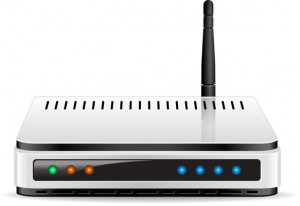With some reports estimating over seven million incidents of cybercrime and online fraud occurring in 2018, it would be a mistake to discount the risks associated with using a wireless printer.
After all, any time data is transmitted wirelessly, there is a chance it could be intercepted. When you think about all the sensitive information that is printed in your company, this threat may then seem quite real.
Try the following tips to minimize the risk of a security vulnerability associated with wireless printing:
Use WPA2
This security certification program essentially password protects your print job capabilities just as you would require login credentials to access wireless internet.
By controlling access to your wireless printers, you can also monitor who is printing what and detect when someone attempts to gain unauthorized access to your systems.
Keep Security Software Updated
Many printers come with some form of built-in security, but the installed version can only be effective for so long.
Regularly check for more updated versions of your printers’ security software and install them as they become available to be protected from the latest threats.
Use Data Encryption
Just as your emails and other document sharing methods are encrypted during transmission, you should make sure your printer data is encrypted as well.
This ensures that, if the information is intercepted by a nefarious third-party, they will not be able to decode the stolen data. This is especially important for printers you use to print checks.
Train Your Staff in Printer Protocol
No matter what measures you take to secure your wireless printers, they won’t be as effective if your staff doesn’t know how to properly use equipment or keep protection programs up to date.
Provide training to your employees about safe printing practices.
These tips don’t just apply to large businesses; the threat of a security breach through wireless printing systems can affect small businesses and even individuals just as easily.
With a little forethought and effort however, you can greatly decrease these risks to be able to print without fear.






 Enabling WEP will keep people without the correct password off your Wi-Fi and also prevent unauthorized eavesdropping of network traffic.
Enabling WEP will keep people without the correct password off your Wi-Fi and also prevent unauthorized eavesdropping of network traffic. Segregating your network will keep your workstations, servers, printers, and other network devices secure while keeping your clients, vendors, and other guests off your main network. Allowing visitors unrestricted access to your company’s primary WiFi network can be a costly mistake. These unmanaged mobile devices can carry all types of sophisticated malware, trojans, viruses, and network probes, just waiting for a chance to attack your network.
Segregating your network will keep your workstations, servers, printers, and other network devices secure while keeping your clients, vendors, and other guests off your main network. Allowing visitors unrestricted access to your company’s primary WiFi network can be a costly mistake. These unmanaged mobile devices can carry all types of sophisticated malware, trojans, viruses, and network probes, just waiting for a chance to attack your network. Choosing and buying a router for your wireless internet at home can be a frustrating experience; you want speed, performance and coverage as well as longevity in the life of your upgraded router.
Choosing and buying a router for your wireless internet at home can be a frustrating experience; you want speed, performance and coverage as well as longevity in the life of your upgraded router.